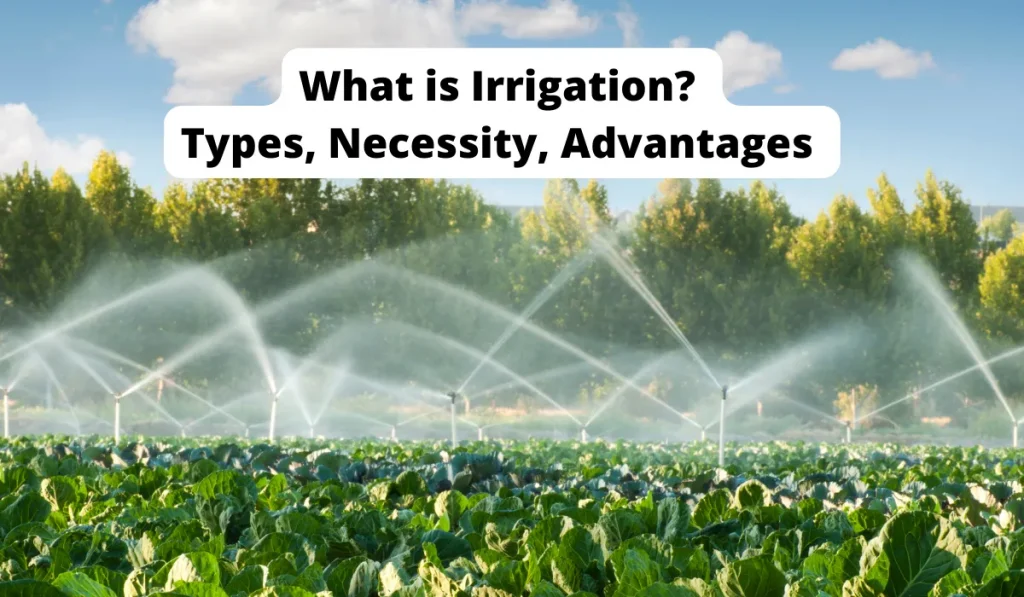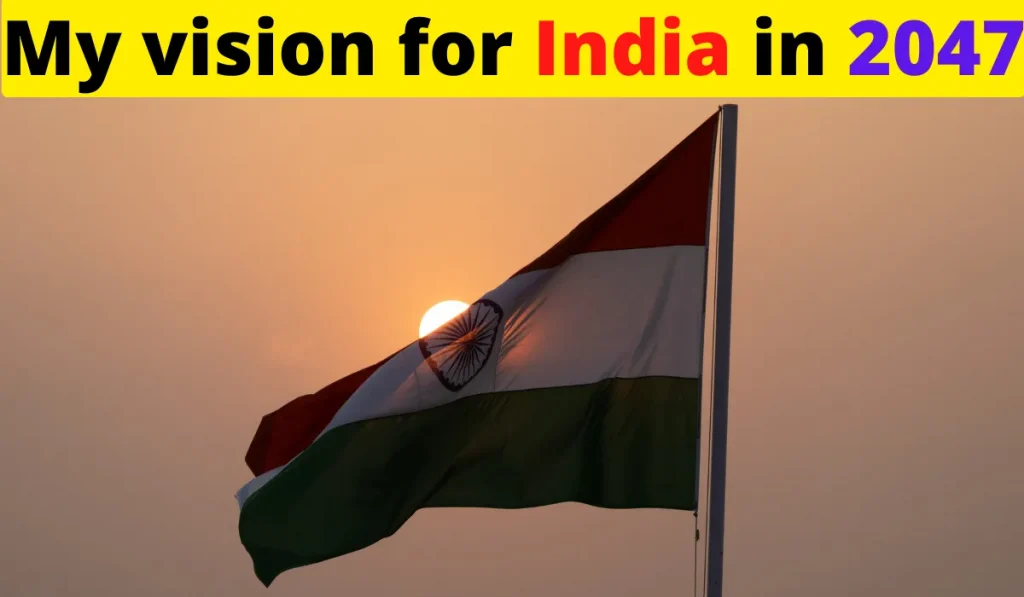Contents
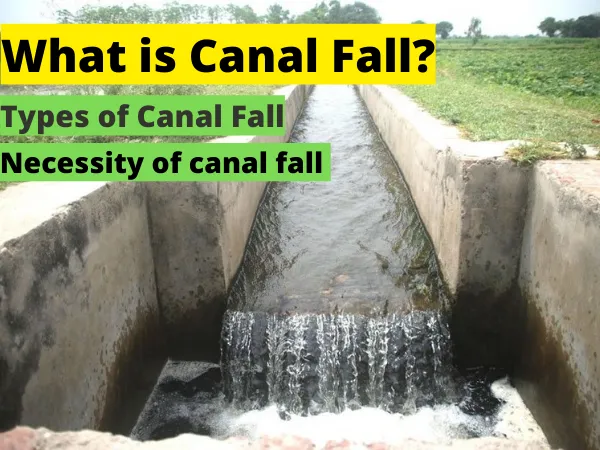
Canal Fall is one of the most basic structures used to create a canal in order to store and discharge the water. It is mainly used in water conservancy projects and it is constructed to minimize the volume of the water to be stored or discharged. In the Indian context, it is used primarily in the Eastern Region or Eastern India. In this blog, we will focus on the basics of the canal fall and its significance.
What is Canal Fall?
A canal is a man-made waterway which is typically used for the purpose of draining water from one level of surface to another, or carrying it some distance.
Canal fall walls are built by constructing a solid masonry structure on the canal if the natural ground slope is steeper than the designed channel bed slope.
The construction of a canal fall wall starts with the excavation of the canal. The canal fall wall is constructed on the excavated canal and its abutments. When the canal is completed and the excavated material is placed back into the excavation, the canal fall wall is embedded in the canal and the canal is completed. The canal fall wall is constructed by constructing a solid masonry structure on the canal and its abutments. The canal is then filled with a mixture of sand, gravel, and cement. The canal is then backfilled with the excavated material.
- A canal fall or drop is an watering framework set-up across a canal to lower down its bed level to carry on with the projected slope when there is a change of ground level.
- These dropping water at the fall own some excess energy. The fall is build in such a way that it can demolish this excess energy.
What is the necessity of canal fall?
When the slope of the ground instantaneously changes to steeper slope, the permissible bed slope can not be maintained. It requires extreme earthwork in filling to maintain the slope. In such a case falls are provided to avoid extreme earth work in filling.
Types of canal falls
Depending on the ground level state and shape of the falls the various types of falls are:
- Ogee fall
- Stepped fall
- Vertical or Sarda type fall
- Rapid fall
- Straight glacis fall
- Trapezoidal fall
- Montague fall
- Inglis or baffle fall
Now, let’s talk about them in details:
1. Ogee fall
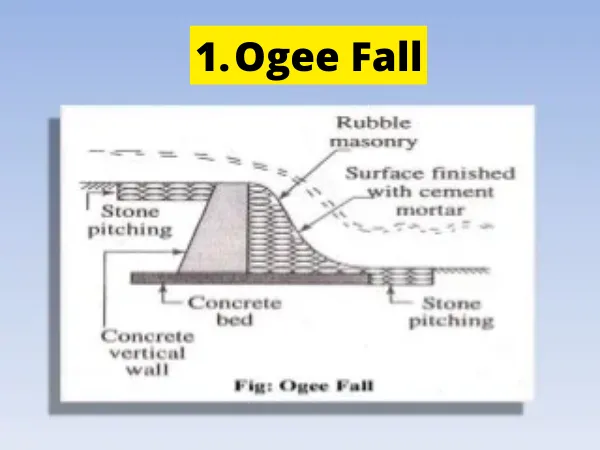
- These type of fall has gradual convex and concave side that is in the ogee form. The gradual convex and concave side is provided with an aim to provide smooth transition and to reduce disturbance and impact.
- A hydraulic jump is formed which disperse a part of kinetic energy.
- Upstream and downstream of the fall is supported by stone pitching.
2. Stepped fall
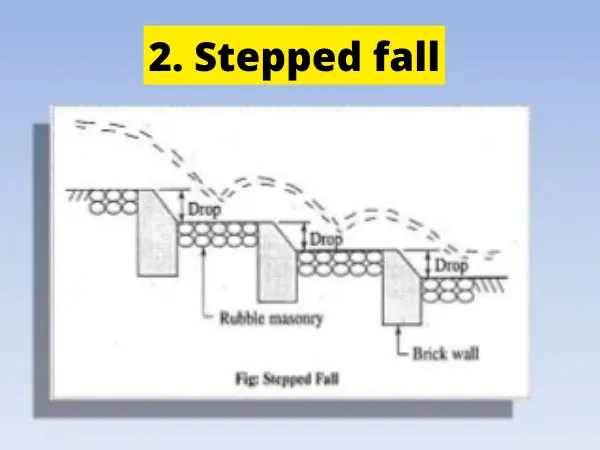
- It contain of a sequence of vertical drops in the form of footsteps.
- This footsteps is respectable in places where sloping ground is very long and need a long glacis to attach the higher bed level upper surface with lower bed level downstream.
- The sloping glacis is split into a number drops to bring down the canal bed step by step to protect the canal bed and sides from destruction by erosion.
- Brick walls are delivered at each drop.
- The bed of the canal within the fall is secured by rubble masonary with surface finishing by rich cement mortar.
3. Vertical fall ( Sarda fall)
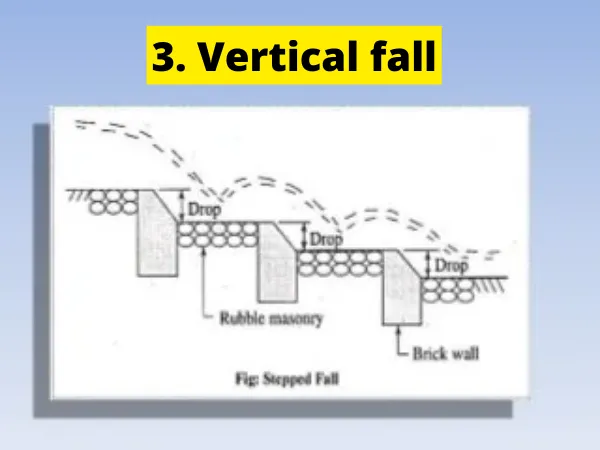
- In the straightforward type, canal upper surface bed is on the level of upstream curtain wall, canal upper surface bed level is under the crest of curtain wall.
- In both the cases, a cistern is set-up to act as water cushion.
- Floor is build of concrete upper surface and down surface side stone pitching with cement grouting is delivered.
- These type of fall is used in sarda canal UP and for that reason, it is also called sarda fall.
- Vertical drop falls are fit for discharge up-to 15 cumecs and drops upto 1.5 meters.
4. Rapid fall
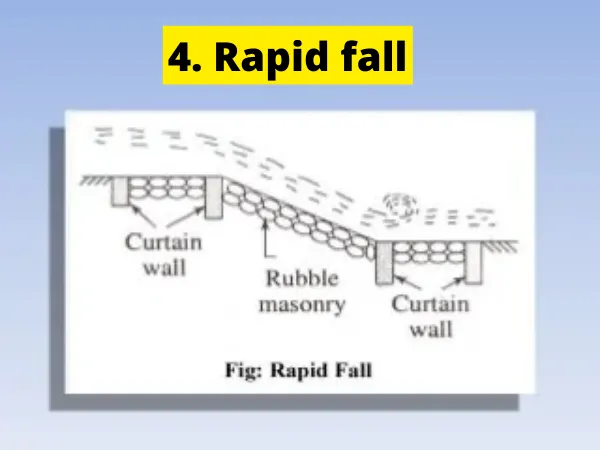
- When the natural ground level is even and rapid, this rapid fall is suitable.
- Long rapids at slopes 1:15 to 1:20 with boulder facings, were provided.
- Expensive hence become obsolete.
5. Straight glacis fall
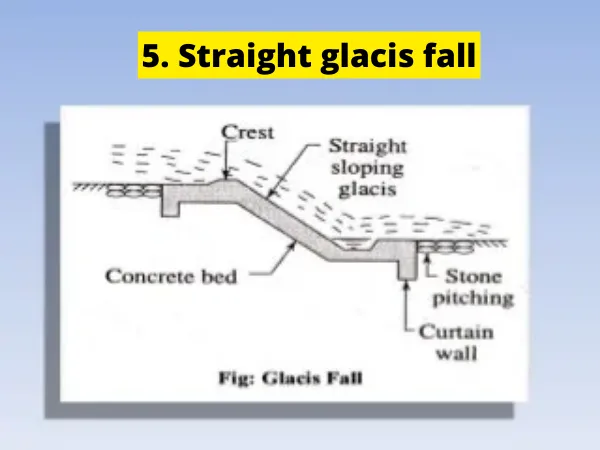
- It contains of a straight glacis delivered with a crest wall.
- For scatter of energy of flowing water, a water cushion is delivered.
- Curtain walls are delivered at toe and heel.
- Straight glacis falls fits for let-out up to 60 cumecs and drops up to 1.5 meters.
6. Trapezoidal notch fall
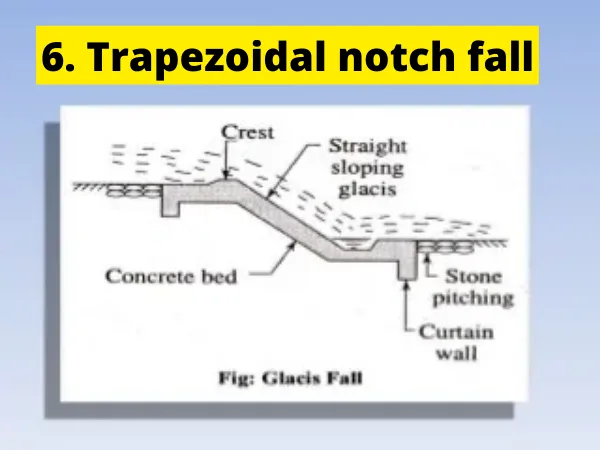
- This was designed by Reid in 1894.
- In this type a body or foundation wall across the channel include of several trapezoidal notches b/w side pier and intermediate pier is constructed to dissipate the surplus energy.
- The sill of the notches are held at upstream bed level of the canal.
- Upstream and downstream side of the fall is covered by stone pitching finished with cement grouting.
7. Montague type fall

- In the straight glacis type profile, energy dissipation is not complete.
- Therefore, montague originate this type of profile where energy dispel takes place by replacing straight glacis by a parabolic glacis.
8. Inglis or Baffle fall

- Here glacis is linear and sloping, but baffle wall delivered on the downstream floor dissipate the energy.
- Main body of glacis is build of concrete.
- Curtain walls both at toe and heel are delivered.
- Stone pitching are crucial both at upper surface and down surface ends.
- Baffle fall or inglis fall fits for more than 1.5 meters for all discharge.
Final Thoughts
Canal Fall is an engineering structure used to create a canal in order to store and discharge the water. It consists of a dam or weir, a spillway, and a canal. The spillway is the part of the canal that is used to discharge the water when it is too deep to go over the dam. The dam is the part of the canal that holds back the water while the water levels in the canal are low. The spillway is capable of controlling the flow of water in the canal. The spillway is then used to release the water when the water levels in the canal are high.
We hope you enjoyed our blog post about the Canal Fall and types of canal fall. Canal Falls are a very essential part of a canal, but they are also quite commonly overlooked. So, we hope that our blog post helped demystify what they are. Please contact us anytime if you have any questions or comments by visiting EduKar.
Thank you for reading, we would love to hear from you!




![Corporate Accounting [Important Questions & Answers with MCQ] Corporate Accounting Important Questions & Answers](https://edukar.org/wp-content/uploads/2022/09/Corporate-Accounting-Important-Questions-Answers-1024x597.webp)
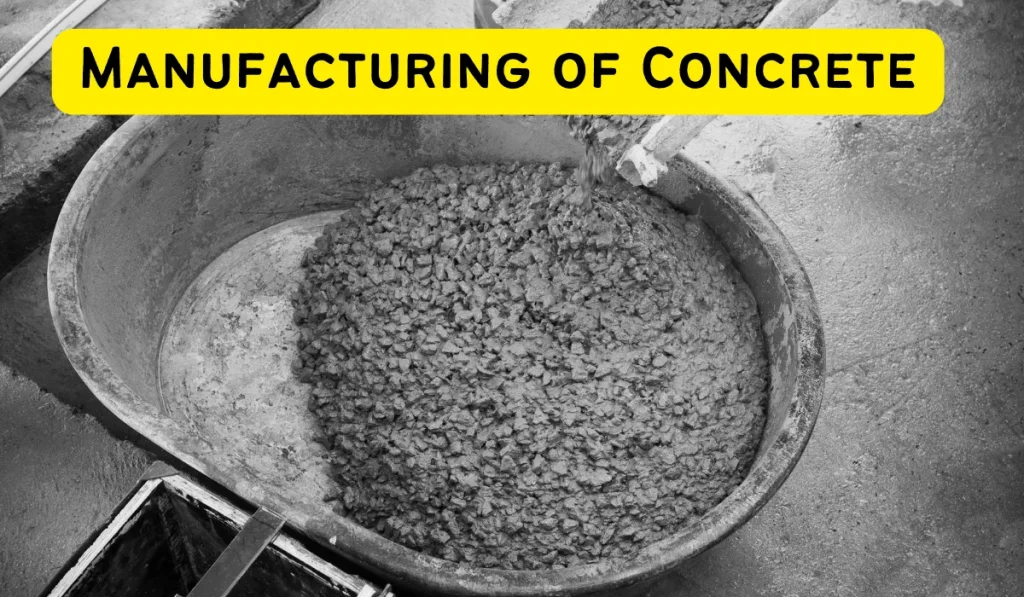
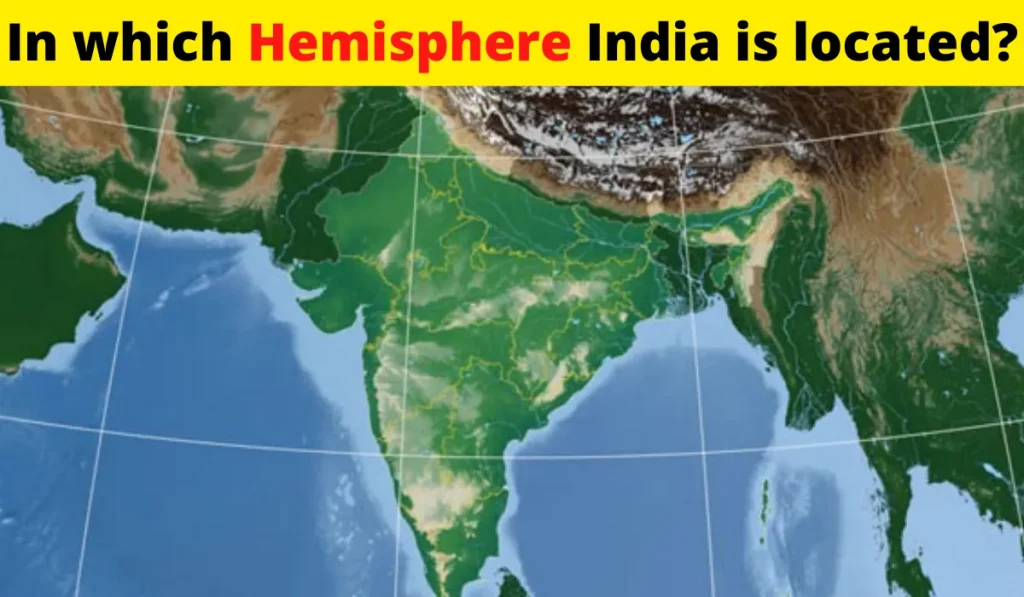
![Zoology Important Questions [Class 11th-English medium] Zoology Important Questions class 10 english medium](https://edukar.org/wp-content/uploads/2022/09/Zoology-Important-Questions-class-10-english-medium-1024x597.webp)

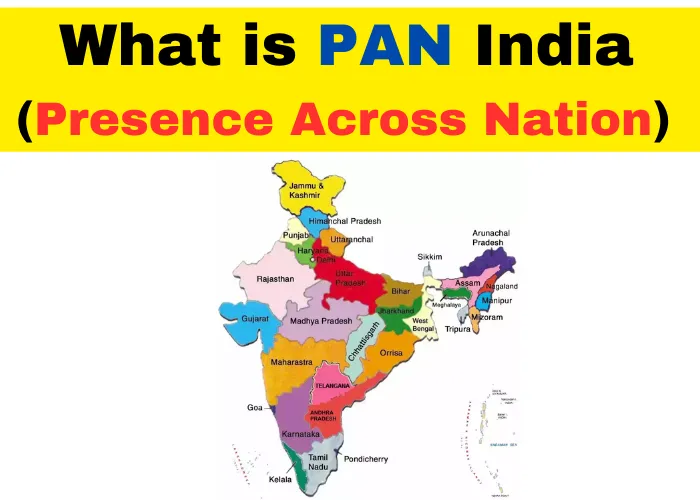
![Web application and Security Class 10 [Questions Answers & MCQs] Web application Class 10 Questions & Answers](https://edukar.org/wp-content/uploads/2022/09/Web-application-Class-10-Questions-Answers-1024x597.webp)
![Digital Documentation Class 9 [Questions Answers & MCQ] Digital Documentation Class 9](https://edukar.org/wp-content/uploads/2022/08/Digital-Documentation-Class-9-1024x597.webp)
